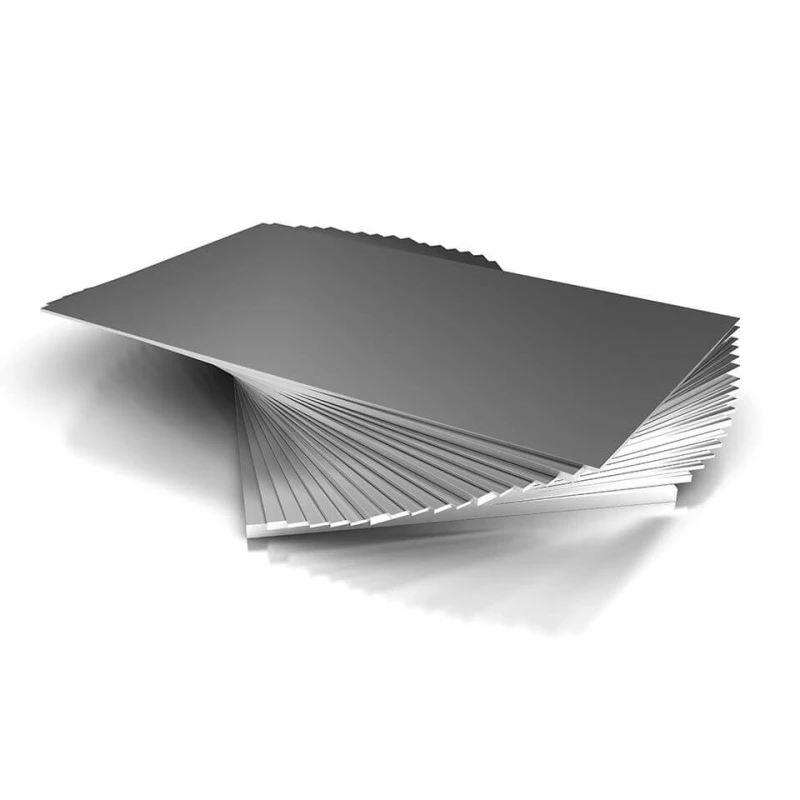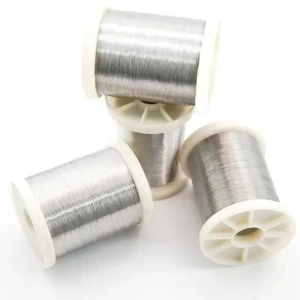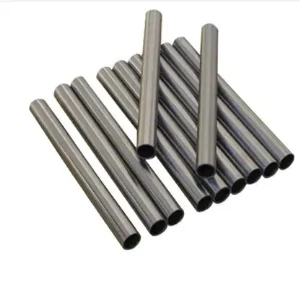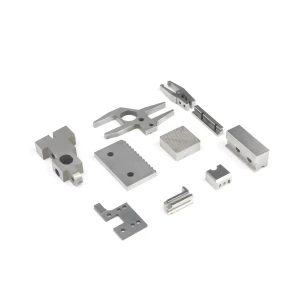Other recommendations for your business
PRODUCTION INFORMATION
| Name: | high purity polished cheap niobium Hafnium plate | |||
| Size: | Diameter :width <6 inch (152.4mm)、Thickness >0.187Inch(4.75mm) | |||
| Standard: | ASTM R04296 , C103 | |||
| Production Process: | Extrusion, forging, rolling etc. | |||
Chemical Composition:
| R04295 Niob-Hafnium alloy plate | ||||
| Element | Content ,Max,Weight % (Unless otherwise specified) | |||
| C | 0.015 | |||
| O | 0.025 | |||
| N | 0.01 | |||
| H | 0.0015 | |||
| Hf | 9~11 | |||
| Ti | 0.7~1.3 | |||
| Zr | 0.7 | |||
| W | 0.5 | |||
| Ta | 0.5 | |||
| Nb(Take the difference) | ||||
| Mechanical performance requirement: | ||||
| R04295 Nb-Hafnium alloy (Specified by the demander) | ||||
| element | Content ,Max,Weight % | |||
| O | 0.035 | |||
| C | 0.015 | |||
| N | 0.01 | |||
| H | 0.0015 | |||
| Rolling, forging or drawing round cross-section bar and wire rod size allowable deviation: | ||||
| Diameter, inch (mm) | allowable deviation, + or - ,inch (mm) | |||
| ≥0.020~0.030(0.51~0.76) | 0.00075(0.019) | |||
| ≥0.030~0.060(0.76~1.52) | 0.001(0.025) | |||
| ≥0.060~0.090(1.52~2.29) | 0.0015(0.038) | |||
| ≥0.090~0.125(2.29~3.19) | 0.002(0.051) | |||
| ≥0.125~0.187(3.19~4.75) | 0.003(0.076) | |||
| ≥0.187~0.375(4.75~9.52) | 0.004(0.102) | |||
| ≥0.375~0.500(9.52~12.7) | 0.005(0.127) | |||
| ≥0.500~0.625(12.7~16.9) | 0.007(0.178) | |||
| ≥0.625~0.750(16.9~19.1) | 0.008(0.203) | |||
| ≥0.750~1.000(19.1~25.4) | 0.010(0.254) | |||
| ≥0.750~1.000(19.1~25.4) | 0.015(0.381) | |||
| ≥1.500~2.000(38.1~50.8) | 0.020(0.508) | |||
| ≥2.000~2.500(50.8~63.5) | 0.030(0.762) | |||
Niobium and hafnium alloys are usually prepared by the combination of electron beam smelting and vacuum white consumption arc smelting, then extrusion or forging at a temperature above 1200°C, and rolling at a temperature below 500°C And drawing and other processing, can be made into plates, strips, rods, wires and forgings and other products.
Niobium hafnium alloy welding
Niobium-hafnium alloys have good weldability. Usually, argon tungsten shielded welding and electron beam welding are used to realize the connection of parent metals. These two welding methods can also be used to complete the welding of niobium-hafnium alloys with titanium and titanium alloys.
The quality of the weld seam is related to the purity of the argon gas and the degree of vacuum. Generally, the higher the purity of the argon gas and the lower the residual atmospheric pressure, the better the quality of the weld seam.
Niobium and hafnium alloy heat treatment
Generally, vacuum or inert gas protection annealing treatment and solution aging treatment are used.
Niobium hafnium alloy coating
Cr-Ti-Si and Cr-Fe-Si series anti-oxidation coatings are usually used.
The niobium-hafnium alloy coated with these two coatings has an anti-oxidation life of more than 150h in the air at 1371°C.
Niobium-Hafnium Plate refers to an alloy plate mainly made of two metal elements: Niobium (Nb) and Hafnium (Hf).
Niobium and hafnium are in the same group in the periodic table of elements and their chemical properties are similar, allowing them to form solid solution alloys that combine the advantages of both elements and have a unique set of physical and chemical properties.
characteristic:
1. High melting point: Niobium-hafnium alloy maintains the characteristics of high melting point and is suitable for high temperature applications.
2. Corrosion resistance: The alloy inherits the excellent corrosion resistance of niobium and can resist corrosion by various acids and alkali.
3. Low thermal expansion coefficient: The thermal expansion coefficient of alloys is usually low and is suitable for use in environments with temperature fluctuations.
4. Superconductivity: Niobium-hafnium alloys may exhibit superconductivity at low temperatures and can conduct electrical current without resistance.
5. Biocompatibility: Niobium-hafnium alloy has good compatibility with human tissues and is suitable for use in the medical field.
application:
Aerospace industry: Niobium-hafnium plates are used in the manufacture of aircraft engine components, rocket nozzles and construction materials for spacecraft.
Electronic industry: used as materials for electronic components such as capacitors, resistors, inductors, etc., especially in applications that require resistance to high temperatures and high frequencies.
Medical Devices: Used in the manufacture of medical devices that are implanted in the human body, such as pacemaker electrodes and orthopedic implants.
Chemical industry: used in the manufacture of corrosion-resistant equipment and vessels, such as reactors and pipes.
Superconducting magnets: used in the manufacture of superconducting magnet coils in MRI (magnetic resonance imaging) equipment.
The production and processing of niobium-hafnium plates involves complex metallurgical processes, including steps such as smelting, forging, rolling and cutting. Due to the high melting point and special physical and chemical properties of niobium and hafnium, their production and processing require precise temperature control and professional technology. Niobium-Hafnium plates can be manufactured in different thicknesses and sizes depending on specific application needs.
It is important to note that the specific properties and applications of niobium-hafnium alloys may vary depending on the ratio of niobium to hafnium in the alloy and other added elements. Therefore, for a specific application, the composition of the alloy and the heat treatment process need to be carefully designed to meet the performance requirements.
Supplier's popular products
Contact Supplier
We have more categories for you. lf you can't find the products you want above,just fill in the form and tell us whatproducts you want to import from China.
















